All you need to know about Carpenter's Square - 25
The first-line hane  also makes a lot of difference. What's the best strategy for white?
also makes a lot of difference. What's the best strategy for white?
First of all, white cannot use the easy option  as in Shape 24. This is because thanks to
as in Shape 24. This is because thanks to  black has the leisure to play key point
black has the leisure to play key point  .
.  can also play at
can also play at  directly. In both cases the corner is unconditionally alive.
directly. In both cases the corner is unconditionally alive.
 doesn't work either, resulting in a seki. If
doesn't work either, resulting in a seki. If  plays
plays  instead, it is also a seki.
instead, it is also a seki.
It may appear that  tesuji and the sequence in Diagram 23.9 still work in this shape. But
tesuji and the sequence in Diagram 23.9 still work in this shape. But  here is incorrect.
here is incorrect.
 is a tesuji we've seen before (e.g. Diagram 5.2). Because of
is a tesuji we've seen before (e.g. Diagram 5.2). Because of  ,
,  is now possible.
is now possible.
 wants to start a ko. But even if black cannot win the ko fight, there is still sufficient room to make two eyes.
wants to start a ko. But even if black cannot win the ko fight, there is still sufficient room to make two eyes.
 here would result in a 'connect-and-die' situation and black is unconditionally alive again.
here would result in a 'connect-and-die' situation and black is unconditionally alive again.
 is the last option for white. This move always works in Shape 23, but we did not discuss it in details because the outcome would be inferior to the solution. Clearly
is the last option for white. This move always works in Shape 23, but we did not discuss it in details because the outcome would be inferior to the solution. Clearly  is the key point. After
is the key point. After  /
/  exchange, white has three options. Note that
exchange, white has three options. Note that  cannot play at 'a'.
cannot play at 'a'.
 here ends up in an approach ko favourable for black - white needs an extra move at 'a' to make it a directly ko, which is much much worse for white in Shape 23 but acceptable in this shape.
here ends up in an approach ko favourable for black - white needs an extra move at 'a' to make it a directly ko, which is much much worse for white in Shape 23 but acceptable in this shape.
 is also possible and
is also possible and  is a tesuji. After
is a tesuji. After  this again results in an approach ko favourable to black. Note that if black doesn't start the ko at
this again results in an approach ko favourable to black. Note that if black doesn't start the ko at  right away, white has the option to make the corner a seki by playing
right away, white has the option to make the corner a seki by playing  .
.
 here is another option. Later white has the option to make a 10000-year ko at 'a' or seki at 'b'.
here is another option. Later white has the option to make a 10000-year ko at 'a' or seki at 'b'.
Conclusion: black corner is quite safe. White can choose to fight an approach ko or a 10000-year ko (which implies a seki). The situation is quite subtle and the outcome is dependent on positions elsewhere.

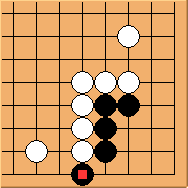
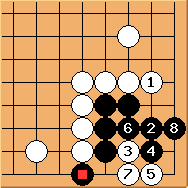
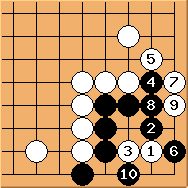
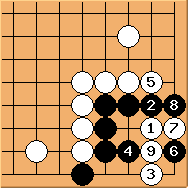
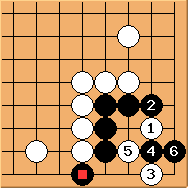
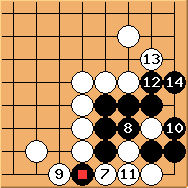
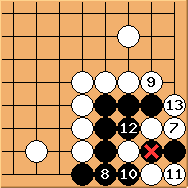
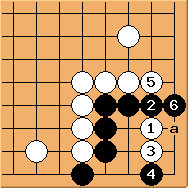
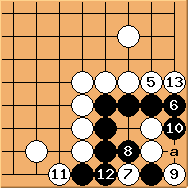
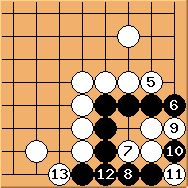
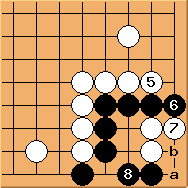
Comments
Diagram 25.3
If 9 at 10 in Diagram 25.3, isn't it a ko? B must avoid a Bulky Five.